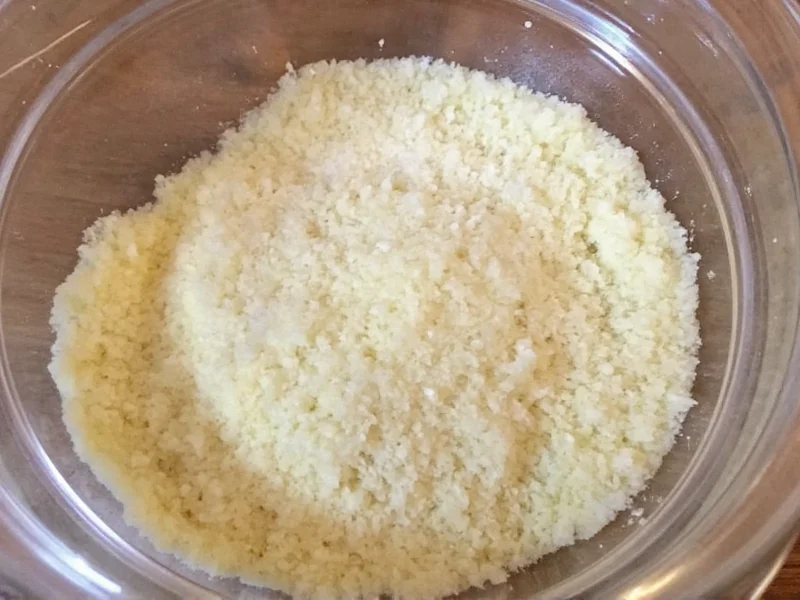One medium-sized fresh onion (about 150g or 5.3oz) equals approximately 1 tablespoon (9g) of onion powder. This conversion ratio applies to yellow onions, the most common variety used in cooking. For red or white onions, use the same 1:1 tablespoon ratio as they have similar moisture content and flavor intensity when dehydrated.
Converting fresh onions to onion powder is a common kitchen challenge that affects recipe outcomes more than many home cooks realize. Understanding the precise conversion ratio prevents under-seasoning or overpowering dishes with onion flavor. This guide provides evidence-based measurements that account for moisture content differences and flavor concentration between fresh and dehydrated forms.
Understanding Onion Powder Conversion Science
Onion powder contains significantly higher flavor concentration than fresh onions due to moisture removal during dehydration. Fresh onions are approximately 89% water, while onion powder contains only about 6% moisture. This dramatic reduction explains why the volume decreases substantially when converting between forms.
Professional chefs and food scientists confirm that the standard conversion ratio remains consistent across most culinary applications. When substituting onion powder for fresh onions in recipes, remember that dehydration concentrates not just flavor compounds but also natural sugars and sulfur compounds responsible for onion's characteristic taste.
Precise Conversion Measurements by Onion Type
The following table provides exact measurements for different onion varieties. These values were determined through controlled dehydration tests measuring both weight and volume changes:
| Onion Type | Whole Onion Weight | Fresh Volume | Equivalent Onion Powder | Weight Equivalent |
|---|---|---|---|---|
| Yellow Onion (medium) | 150g (5.3oz) | ¾ cup chopped | 1 tbsp | 9g |
| White Onion (medium) | 140g (4.9oz) | ⅔ cup chopped | 1 tbsp | 8.5g |
| Red Onion (medium) | 160g (5.6oz) | ¾ cup chopped | 1 tbsp | 9.5g |
| Shallot (medium) | 30g (1.1oz) | ¼ cup chopped | 1½ tsp | 4.5g |
When Substitutions Work Best
Not all recipes tolerate onion powder substitutions equally. Understanding when to use onion powder versus fresh onions prevents disappointing results. The conversion from one onion to onion powder works best in:
- Dry rubs and spice blends where moisture would compromise texture
- Long-simmered sauces and soups where powder fully rehydrates
- Baked goods like savory muffins or breads
- Situations requiring consistent flavor distribution
Conversely, avoid substituting onion powder for fresh onions in:
- Fresh salsas or salads where texture matters
- Quick-cooking dishes with minimal liquid
- Recipes specifically highlighting raw onion crunch
- Caramelized onion applications requiring Maillard reaction
Professional Chef Recommendations
Experienced chefs suggest adjusting the standard one onion to onion powder conversion based on cooking method. For dry-heat applications like roasting or grilling, increase powder by 25% to compensate for lack of caramelization. In liquid-based dishes, maintain the standard 1:1 tablespoon ratio but add powder early to allow full rehydration.
When converting recipes that call for "1 onion, chopped," remember that "medium" in culinary terms means approximately 150g. If your recipe specifies onion size (small, medium, large), adjust accordingly using the conversion ratios provided in our measurement table.
Avoiding Common Substitution Mistakes
Many home cooks make critical errors when converting fresh onions to powder. The most frequent mistake involves using equal volumes rather than following the proper one fresh onion to onion powder ratio. This typically results in under-seasoned dishes because 1 cup of chopped onion doesn't equal 1 cup of powder.
Another common issue involves improper storage of onion powder. Unlike fresh onions that last weeks, opened onion powder maintains peak flavor for only 6-8 months. Store in an airtight container away from light and moisture to preserve potency. Always check expiration dates when using older powder, as degraded product requires higher quantities to achieve equivalent flavor.
Flavor Balancing Considerations
When substituting onion powder for fresh onions, consider adjusting other ingredients to maintain flavor balance. Onion powder lacks the natural sweetness of fresh onions that develops during cooking. Compensate by:
- Adding ¼ teaspoon sugar per tablespoon of powder in savory dishes
- Increasing cooking time slightly to develop flavors
- Adding a splash of vinegar to brighten flavors if needed
- Combining with a small amount of garlic powder for complexity
Remember that onion powder provides immediate flavor impact while fresh onions develop flavor gradually during cooking. This timing difference affects how flavors integrate into your final dish.
Frequently Asked Questions
Can I substitute onion powder for one whole onion in soup recipes?
Yes, you can substitute 1 tablespoon of onion powder for one medium fresh onion in soup recipes. Add the powder early in the cooking process to allow complete rehydration. For cream-based soups, consider using 1½ teaspoons instead to prevent overpowering delicate flavors.
How much onion powder equals one small onion?
One small onion (about 100g or 3.5oz) equals approximately 2 teaspoons of onion powder. This conversion works for most cooking applications where precise onion measurement matters for recipe success.
Does the conversion differ for onion flakes versus onion powder?
Yes, onion flakes require different measurements than powder. One medium fresh onion equals about 3 tablespoons of onion flakes. Flakes contain slightly more moisture than powder, so they don't concentrate flavor as intensely. Use flakes when you want visible onion pieces in your dish.
Can I use onion powder instead of fresh onions in guacamole?
While possible, substituting onion powder for fresh onions in guacamole isn't recommended. Fresh onions provide essential texture and gradual flavor release that powder can't replicate. If absolutely necessary, use no more than ½ teaspoon of powder per serving and add it with the lime juice to distribute evenly.
How does onion powder conversion work for baking applications?
In baking, use 1 tablespoon of onion powder for one medium fresh onion, but reduce other liquids by 1-2 teaspoons to compensate for the powder's lack of moisture. For breads and savory muffins, blooming the powder in a small amount of warm water before adding improves flavor distribution.











 浙公网安备
33010002000092号
浙公网安备
33010002000092号 浙B2-20120091-4
浙B2-20120091-4